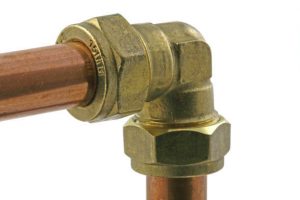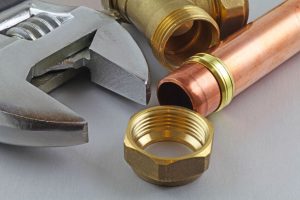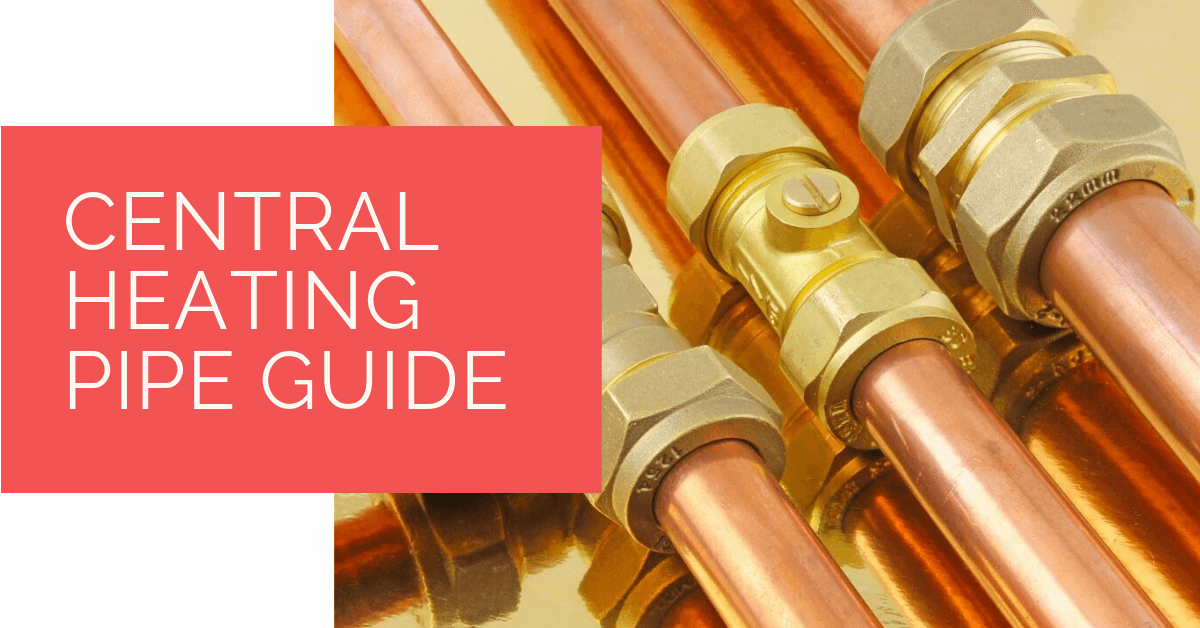A new central heating system in the house can save both energy and money on electric bills. If one is planning to buy a new unit or replace the existing system, it is crucial to make sure the new radiators and boilers meet the quality standards. But, apart from these two components, the user needs to keep an eye on the pipework too. The pipes play a vital role in the efficiency of the central heating system.
Contents
- 1 Key Takeaways
- 2 Installation Requirement
- 3 Single Pipe Loop
- 4 Feed and Return Pipes
- 5 Microbore Central Heating
- 6 Installing the pipework
- 7 Case Study: Optimising Central Heating Pipework for Efficient Heating
- 8 Expert Insights About Central Heating Pipes
- 9 Heat Pump Source: Reliable Heating and Cooling Solutions
- 10 Conclusion
Key Takeaways
- The efficiency and effectiveness of a central heating system depend not only on the boiler and radiators but also on the quality and setup of the pipework.
- There are three primary methods of laying pipes for central heating in the UK: Single Pipe Loop, Feed and Return Pipes, and Microbore Central Heating, each with advantages and considerations.
- Consultation with a professional installer is essential to determine the best pipework method for a property, considering the number of radiators, property size, and specific installation requirements.
Installation Requirement
It is always wise to discuss with a professional about the installation of a central heating system. They are the right people to recommend the best radiators for the house. These professionals consider the number of family members, the average water requirement of the family, and the size of the boiler that will suit the house. These factors help to determine the approximate heat output the boiler will support. It also indicates the size of the pipes required for installing the system. Depending on the boiler and the heating system unit, there are three methods to lay the pipes in the UK.

Single Pipe Loop
The name probably gives it all. This pipe runs from the boiler goes through each radiator, and finally comes back to the boiler completing a full circle. The hot water circulating inside due to natural convection slowly rises and enters the radiators pushing the cold water into the circuit so that it reheats itself. Professionals often follow the single pipe loop installation in commercial buildings because they have the opportunity to work with larger pipes that are suitable for the central heating system. However, it is wise not to use it in smaller properties. In this system, the first radiator is always the hottest, but the subsequent ones become progressively cooler, and that’s why it is not efficient for smaller properties.
Feed and Return Pipes
In this system, the two pipes run together and meet at the radiator. The feed pipe is responsible for carrying the hot water in the boiler while the inlet on the radiators connects to the main circuit. The return pipe, on the other hand, carries cold water to the boiler from the radiator. Instead of using the inlet, it uses a separate outlet to transfer the water. This is probably one of the most popular installation systems and is used in almost every domestic house. A significant benefit of using this system is the radiators get water supply at the same temperature. This allows equal heating unlike the process in single pipe loops.
The efficiency of this system allows the users to have an even temperature throughout the house which makes it more comfortable for family members to live in. The radiators work in tandem with the feed and return pipes restricting the water flow into the system. Another reason why this system is widely popular is installers can understand the size of the pump needed to fit in the system depending on the number of radiators present in the unit.
Ideally, a single network of pipes is enough to serve a domestic house comfortably. But, there are properties where there over twelve radiators. If that is the case, then it is better to consult with an installer so that they can plan and proceed on how to cope with the growing water demand in the house.
The installers usually use a 22 mm pipe for the boiler and a 15 mm pipe connecting the radiator. The latter provides the much-needed resistance to the circuit, especially when the pipe has to bend several times.

Microbore Central Heating
Unlike the 22 mm or 15 mm pipes, the microbore central heating system uses pipes with a diameter of 8 mm or 10 mm only. The supply and return of water to the manifolds from the boiler takes place through standard pipework. This microbore pipe runs to each radiator from the manifolds allowing even heating of the water. The microbore central heating is the most efficient of the three systems as a smaller pipe carries less water resulting in lesser heat loss. Most importantly, the installation method is the easiest of the three since it involves plastic pipes that installers can bend near the elbows.
The only drawback of this system is the smaller pipes tend to get blocked by debris and sludge. That’s why it requires regular maintenance. If the pipes are blocked, the heating efficiency is restricted, and the pump and boiler will use a lot of energy unnecessarily. Some brands also provide a separate water treatment kit that can soften hard water before it enters the pipes.
Installing the pipework
The installer will look into the property before deciding the appropriate pipework for the central heating system. If the building is new, they will try to install the pipework underneath the ground to ensure the protection of the pipes. However, houses with concrete floors shouldn’t have such pipe works because there are no possible outlets in the floorboards for the radiators. The installers may have to fit the pipework on the ceilings and use drop pipes to connect to each radiator. Although this may not look good in the property, the installers will try to make the pipes look minimal so that they don’t interfere with the aesthetics.
So, in addition to the boiler and the radiator, the pipework is another area that homeowners should focus on before installing a central heating system. Get in touch with an installer for planning the system before work starts.
Case Study: Optimising Central Heating Pipework for Efficient Heating
Background
A homeowner in the UK approached Heat Pump Source to upgrade their outdated central heating system. The existing system suffered from uneven heating, with some rooms significantly colder than others. The primary objective was to design and install a new system that provided consistent heating throughout the property while maximising energy efficiency.
Project Overview
The project involved assessing the property’s heating requirements, selecting the appropriate pipework configuration, and installing the system to ensure optimal performance. The key challenges included dealing with the existing concrete flooring, which limited underfloor piping options, and addressing the issues caused by the old, inefficient single pipe loop system.
Implementation
Assessment and Planning
- Initial Consultation: Our team conducted a thorough inspection of the property, including the current heating setup and structural constraints. The focus was on identifying the best pipework layout to ensure even heat distribution and efficiency.
- System Selection: Based on the property’s needs, we recommended a feed and return pipe system. This configuration was chosen for its ability to deliver uniform water temperature to each radiator, thus ensuring consistent heating throughout the house.
Installation Process
- Pipework Configuration: Given the concrete flooring, we opted for ceiling-mounted pipework with drop pipes leading to each radiator. This method, while less conventional, was necessary due to the structural limitations and provided an effective solution for heat distribution.
- Material Selection: We used a combination of 22 mm pipes for the main feed and return lines and 15 mm pipes for connections to the radiators. This setup was designed to handle the heating load efficiently and minimise heat loss.
- Installation and Testing: The installation was carried out by our experienced technicians, ensuring all joints and connections were secure. We tested the system thoroughly to check for leaks and to ensure that each radiator received an adequate and consistent heat supply.
Maintenance and Support
- Initial Check-Up: After installation, we performed a comprehensive system check to ensure everything was operating correctly. Adjustments were made to balance the system and optimise the flow rate.
- Ongoing Maintenance Plan: We provided the homeowner with a detailed maintenance plan, including annual inspections and guidance on monitoring the system’s performance. This plan is crucial for maintaining efficiency and extending the system’s lifespan.
Results
- Even Heat Distribution: The new feed and return system provided consistent heat across all rooms, eliminating the previous issue of uneven heating.
- Increased Efficiency: The properly sized pipes and efficient layout significantly reduced heat loss, resulting in lower energy consumption and utility bills.
- Customer Satisfaction: The homeowner expressed high satisfaction with the even warmth throughout the home and the professionalism of the installation process.
Summary
This case study underscores the importance of selecting the right pipework for central heating systems. At Heat Pump Source, our tailored solutions ensured that the client’s heating needs were met efficiently and effectively. By carefully planning and executing the installation, we delivered a system that not only improved comfort but also enhanced energy efficiency. Proper pipework configuration, coupled with professional installation, is crucial for the long-term success and reliability of any central heating system.
Expert Insights About Central Heating Pipes
The pipework in a central heating system is as crucial as the boiler and radiators. Properly sized and installed pipes ensure efficient heat distribution throughout the home, preventing heat loss and ensuring consistent temperatures.
Lead HVAC Engineer
Choosing the right pipework configuration is essential for system efficiency. Whether it’s a single pipe loop or a feed and return system, each method has its benefits and is suited to different property types and heating needs.
Central Heating Specialist
Microbore systems, while efficient in terms of heat retention, require regular maintenance to prevent blockages. It’s vital for homeowners to understand these nuances when selecting their central heating setup.
Installation and Maintenance Expert
Heat Pump Source: Reliable Heating and Cooling Solutions
At Heat Pump Source, we take pride in our unwavering commitment to serving the UK with top-tier HVAC solutions. From the efficiency of heat pumps and the cool relief of air conditioning to the warmth of boilers, radiators, and underfloor heating, our dedicated team is always at the forefront of innovation. We understand the unique needs of every household and business, and we strive to provide dependable health and cooling products and services that are tailored just for you. Ensuring your comfort and satisfaction is our utmost priority. Whether you have questions, need guidance, or require support, we’re always here to assist. Please don’t hesitate to contact us; we’re eager to be of service.
Conclusion
The intricacies of installing a central heating system go beyond selecting the right boiler and radiators. The pipework is pivotal in ensuring the system’s efficiency and effectiveness. With various methods available for laying pipes, each tailored to specific property needs, it’s imperative for homeowners to consult with professional installers. This ensures not only optimal heating performance but also the longevity and reliability of the system. As with any significant home improvement, thorough planning and expert guidance are the keys to a successful central heating installation.
About the Author
At Heat Pump Source, our articles are the product of a collaborative effort among a team of highly skilled HVAC experts. Our dedicated professionals, hailing from diverse backgrounds in heating, ventilation, air conditioning, and refrigeration, contribute their extensive knowledge and experience to every piece of content. This multidisciplinary approach ensures comprehensive coverage. Our commitment is to deliver authoritative, reliable, and tailored advice to meet the unique needs of every household and business across the UK.

